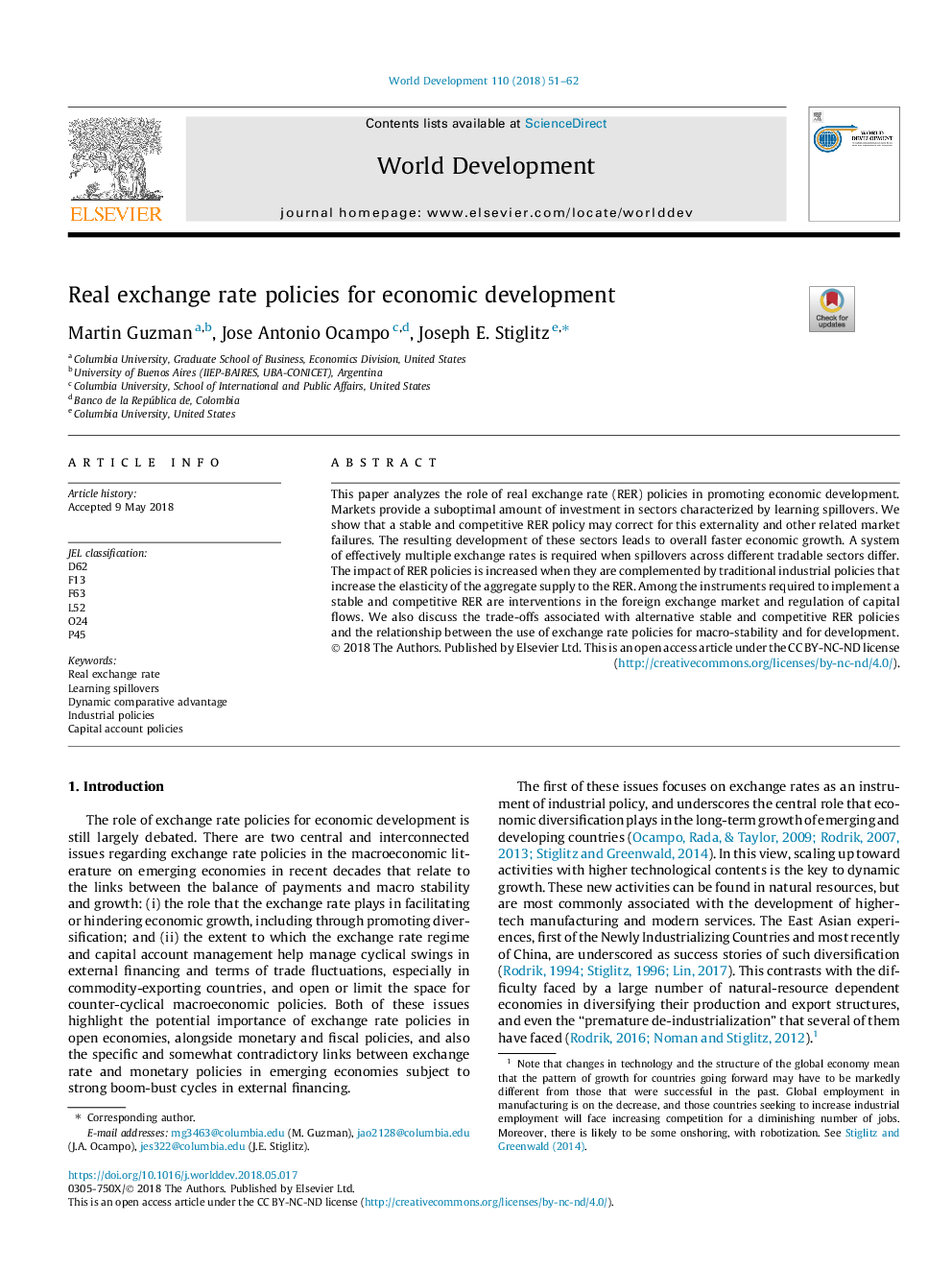| Article ID | Journal | Published Year | Pages | File Type |
|---|---|---|---|---|
| 7391251 | World Development | 2018 | 12 Pages |
Abstract
This paper analyzes the role of real exchange rate (RER) policies in promoting economic development. Markets provide a suboptimal amount of investment in sectors characterized by learning spillovers. We show that a stable and competitive RER policy may correct for this externality and other related market failures. The resulting development of these sectors leads to overall faster economic growth. A system of effectively multiple exchange rates is required when spillovers across different tradable sectors differ. The impact of RER policies is increased when they are complemented by traditional industrial policies that increase the elasticity of the aggregate supply to the RER. Among the instruments required to implement a stable and competitive RER are interventions in the foreign exchange market and regulation of capital flows. We also discuss the trade-offs associated with alternative stable and competitive RER policies and the relationship between the use of exchange rate policies for macro-stability and for development.
Related Topics
Social Sciences and Humanities
Economics, Econometrics and Finance
Economics and Econometrics
Authors
Martin Guzman, Jose Antonio Ocampo, Joseph E. Stiglitz,
